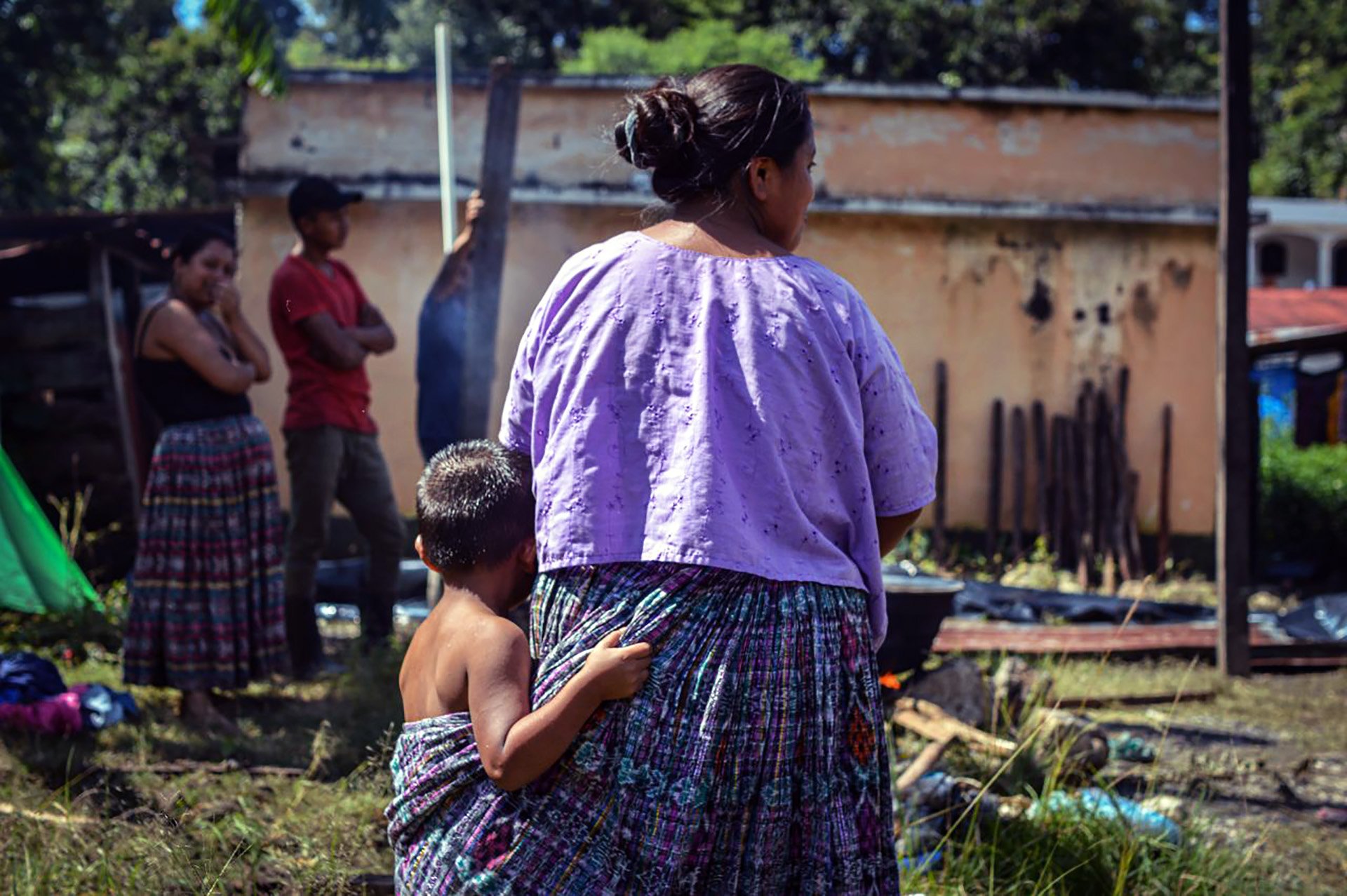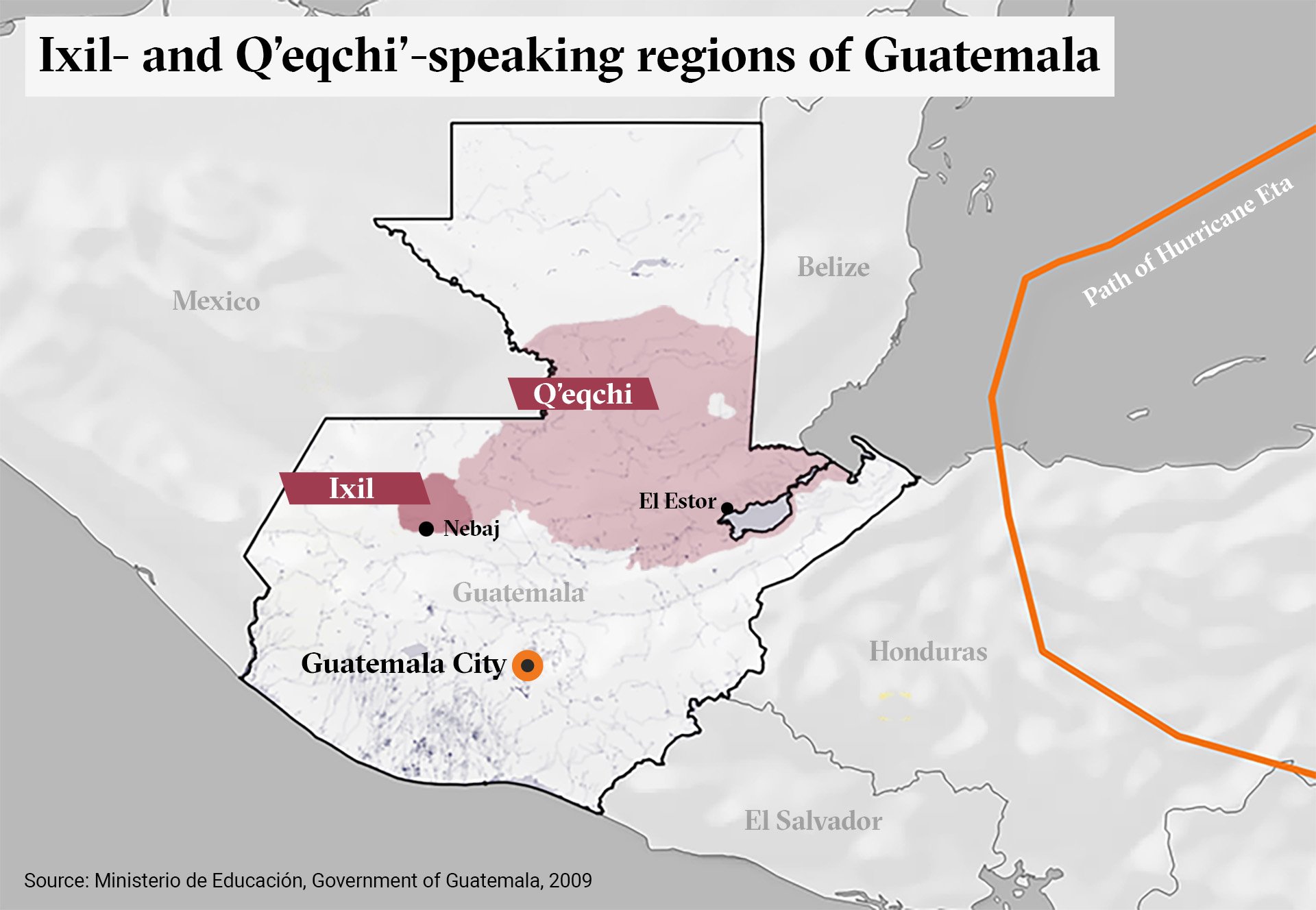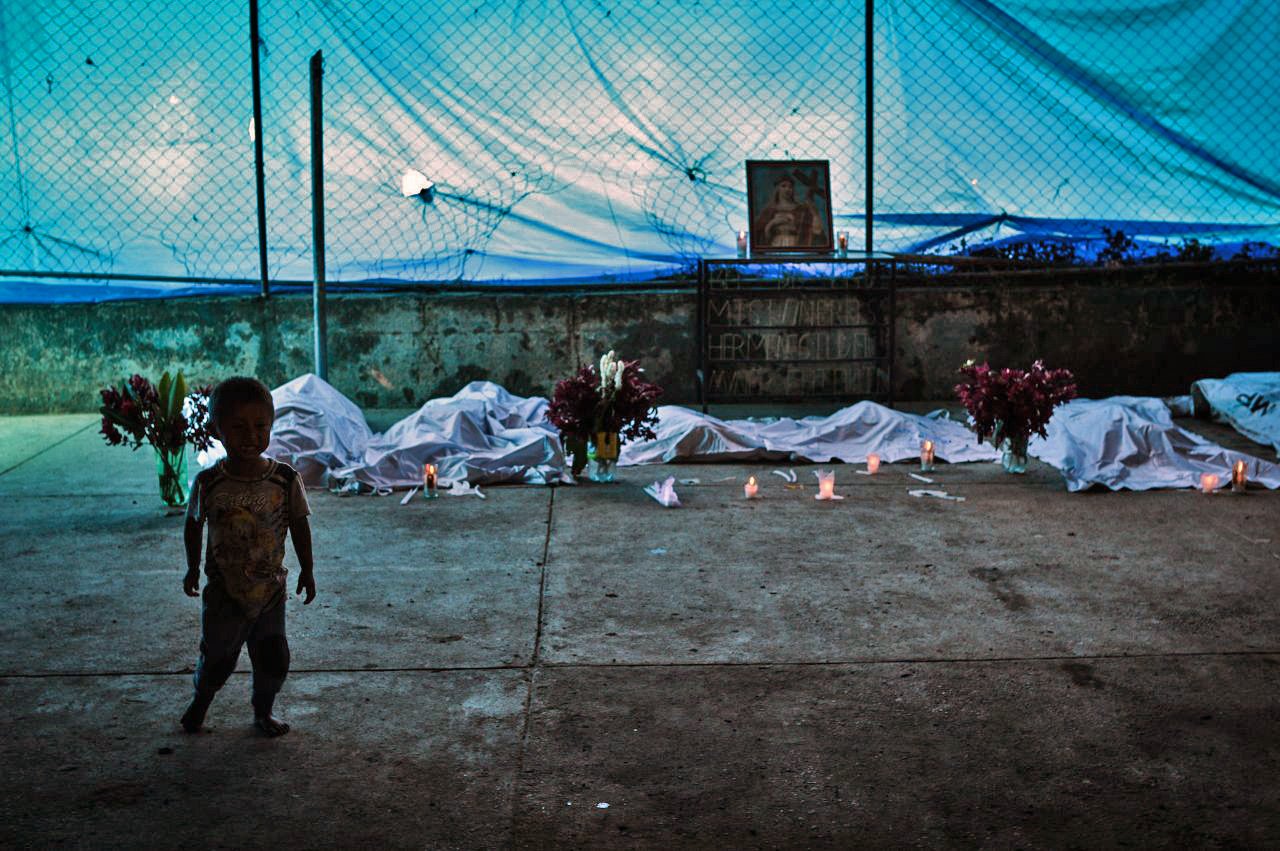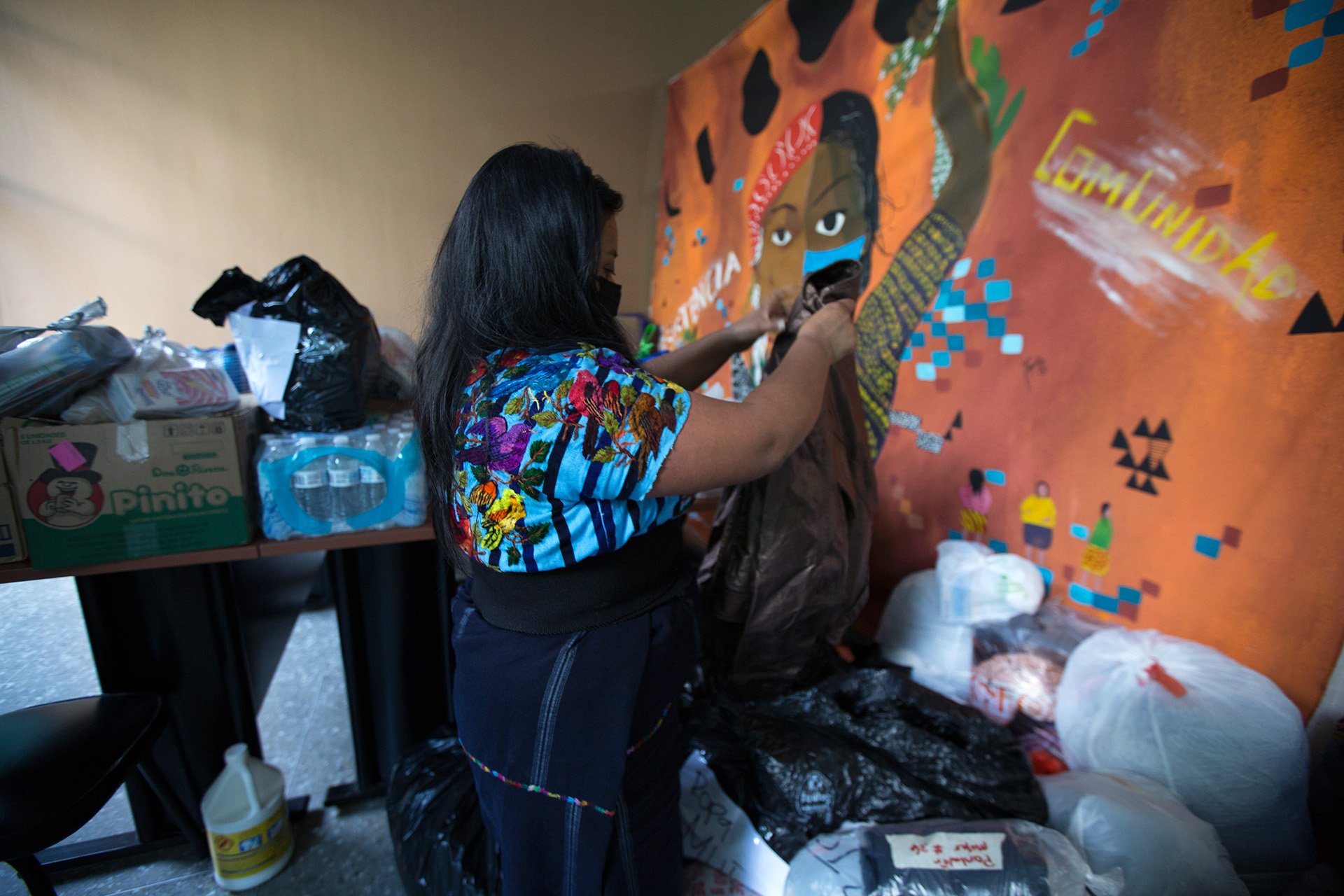In the Indigenous communities of Guatemala hardest hit by Hurricane Eta’s ruinous sweep through Central America, early response to the disaster has come in the form of self-help, amid claims that the slow pace of official assistance is just the latest example of neglect.
After making landfall on Nicaragua’s Caribbean coast on 3 November as a category four storm, Eta barrelled northward, causing widespread flooding and damage in Guatemala, Honduras, and Panama before inundating roads and knocking out power in Florida.
Millions of people in Central America – many of them rural Indigenous communities – have been affected and at least 120 lives have been lost across the region, with many more people missing and presumed dead after landslides subsumed villages.
On 10 November, the International Federation of the Red Cross and Red Crescent Societies (IFRC) was calling the situation in the region a “major humanitarian crisis” and announcing a large-scale aid response, but many communities have so far been left to fend for themselves.
In Guatemala, spontaneous initiatives provided a lot of the immediate support to rural areas and people long marginalised by the central authorities: from mutual aid in the rural Indigenous villages of Nebaj to women’s movements in Guatemala City.
The centre of the storm never touched Guatemala, but the heavy rains it brought to the Cuchumatanes mountain range – the most extensive highland area in Central America – have had ongoing devastating impacts in a large swathe of the surrounding countryside.
In Nebaj, traditional authorities work autonomously of the state. As in several predominantly Indigenous regions of Guatemala, the Maya Ixil governance structure exists outside of municipal and national systems, and relations are often tense.
It was still raining over the weekend and Diego Ceto’s phone was ringing non-stop. As one of the Maya Ixil leaders in the town of Nebaj, 240 kilometres northwest of Guatemala City, he was receiving regular updates on the impacts of Eta from community-level Ixil authorities in the more than 100 villages that comprise the municipality.

“Nothing like this had ever happened in the Ixil region,” Ceto said. “We have had an earthquake, and we have had genocide, but never a storm like this.”
The Indigenous leader detailed examples of the emerging human cost of Hurricane Eta: In the Ixil village of Palop, an overflowing river washed away houses and people. Four bodies were recovered, two of them 20 kilometres downriver, while four people are still missing. In another community, Xeucalvitz, a landslide affected 80 of 220 families, damaging homes and burying four people.
“This afternoon, I got a call reporting that two of them were found in the mud: a woman and her 11-year-old son,” Ceto told The New Humanitarian in a telephone interview on 7 November.
Many homes, crops, and potable water systems have also been destroyed. Bridges and roads have been washed out, destroying many access routes into and within the region. Xeucalvitz was cut off, and remains accessible by air only.
The communities in Nebaj most affected by Eta were not considered those most at risk of flooding or natural disaster. Ceto suspected deforestation due to logging operations factored into the unexpected impacts. “It is the fury of nature,” he said.
Initial rescue and support efforts in Nebaj, as in other rural parts of the country, were carried out by locals: Ixil villagers and townspeople. Those with trucks helped transport people along passable stretches of road to foot-only access points to send help in and get people out. Less affected villages took in evacuated and displaced families.
Although the US military helped with an emergency medical evacuation from Xeucalvitz, Ceto was unaware of any Guatemalan government aid in the region, and said rescue and shelter initiatives have been community-led. The municipal government and churches are now assisting with shelter and supply donation efforts.
“It is the Ixil helping the Ixil,” said Ceto. “Sometimes people say this in political campaigns but here it is real: Only the people save the people.”
Politics, and abandonment
The Guatemalan government is trying to assess needs as reports continue to come in from remote areas – to many of which road access has been washed away. But the picture is incomplete, both on urgent needs and on longer-term issues like crop damage.
And with many communities only accessible by helicopter, there are severe obstacles hindering the coordination of information, needs, and responses – especially to places where there is no electricity or mobile phone signal.

“A lot of aid is politicised here,” said Ceto, noting street protests in the Alta Verapaz department after the Indigenous Q’eqchi’ mayor of the heavily flooded San Pedro Carchá municipality was excluded from a 7 November emergency meeting with President Alejandro Giammattei.
While some municipal governments have been more proactive than others, residents in several regions told TNH they had seen little to no outside help come from either the national government or the international aid sector, and there is a strong sense of neglect.
“It’s abandonment; it’s irresponsibility; and it’s a lack of interest in these communities,” said María Chipel, a Maya K’iche member of the Tz’ununija’ Indigenous Women’s Movement.
Guatemala is second only to Bolivia in Latin America in terms of percentage of population that is Indigenous.
According to the national census, some 44 percent of Guatemala’s roughly 15 million inhabitants are Indigenous, though many autochthonous organisations believe the figure to be above 50 percent.
The overwhelming majority belong to the more than 20 Maya peoples in the country, and a small percentage are Indigenous Xinca and Afro-Indigenous Garifuna.
More than three quarters of Indigenous Guatemalans live in poverty and more than half of Indigenous children are chronically malnourished.
“It is clear that inequality is why the effects [of the storm] are worse in Indigenous communities,” said Chipel. “There is a total abandonment of these places. Now, that other reality [of racial inequality] is resurfacing once again.”
The 36-year civil war between the Guatemalan military and leftist guerrilla groups – which ended in 1996 – left an estimated 200,000 people dead, 45,000 disappeared, and one million displaced.
More than 80 percent of victims were Maya civilians, and 93 percent of atrocities – including more than 600 massacres, some wiping out entire villages – were committed by military and paramilitary forces, according to a UN commission.
The truth commission concluded that state actors committed acts of genocide in four regions of Guatemala, including the Ixil region. In 2013, a Guatemalan court convicted the former military dictator, General Efraín Ríos Montt, of genocide – the first ever conviction of a former head of state in a domestic court anywhere in the world.
“The idea was to exterminate the Indigenous,” said Chipel. “The state does not care about Indigenous people.”
The Tz’ununija’ movement is one of many social, civil society, and student groups coordinating grassroots aid efforts around the country that together have more than a dozen donation collection centres in Guatemala City alone.
Tz’ununija’ has unpaid volunteer members in 13 of Guatemala’s 22 departments. Like many community-based aid initiatives, it has direct connections in affected areas and is bypassing government authorities and international aid agencies entirely.
Chipel was receiving non-perishable food, clothing, and hygiene supply donations in the Tz’ununija’ office, where bags of clothing, toilet paper, and food were piled in the patio. The group was also seeking facemasks, sanitiser, and medications, but none had yet been donated – at least by 7 November, day one of their drive.
“For us, health is the priority,” said Chipel. “Sometimes people lose sight of the reality of the pandemic.”
Many of the Guatemalan regions suffering from the worst flooding, including Cobán in the Alta Verapaz department and Puerto Barrios on the Caribbean coast, are still on red alert – the highest level of restrictions – due to high per capita COVID-19 rates. As of Monday, Guatemala had recorded 111,360 coronavirus cases and 3,823 deaths.
The UN’s emergency aid coordination body, OCHA, warned that throughout Central America, the mix of Eta, COVID-19, and other “pre-existing vulnerabilities” could worsen existing hunger and see a potential rise in vector-borne diseases.
Two other Guatemalan regions heavily affected by Eta, the Chiquimula department in the eastern “Dry Corridor” and the Huehuetenango department, have high rates of migration, largely due to drought. Guatemala was the top country of origin for those apprehended at the southern US border last year, and the widespread destruction of crops and homes – in addition to existing poverty and violence – could spur more people to flee north.
International aid in the works
The response to the storm, including international aid efforts, is being coordinated under the direction of CONRED, Guatemala’s disaster response agency.
Government spokespeople told TNH in written statements that institutions are still monitoring and analysing ongoing impacts around the country, and that the prioritisation of humanitarian aid needs and calls for international assistance were underway.

Taiwan, the United States, and El Salvador have offered assistance in the form of rescue workers, helicopters, donations, and food aid.
The World Food Programme, meanwhile, said it was evaluating whether the UN agency’s existing resources could be redirected to regions suffering from severe storm impacts.
“We’re very concerned about the fact that this is a crisis on top of a crisis on top of a crisis, as it were, because it comes after the impact of the pandemic,” said Laura Melo, WFP’s country director. “The pandemic already comes on top of four or five consecutive years of drought that has also really impacted the most vulnerable rural communities in particular.
“This is really a series of shocks that are affecting some of the most vulnerable communities in this country,” she said, adding that global needs due to the pandemic might mean there is less support from donor countries in the wake of Eta.
According to spokesperson María Rossell, the Guatemalan Red Cross will soon begin assessing longer-term humanitarian needs, particularly with regard to the widespread destruction of crops and homes. But for now, the organisation, part of the CONRED-run Emergency Operations Centre, is focused on immediate needs, coordinating its activities with national and local government officials.
Rossell said the Red Cross had 300 volunteers on the ground in seven affected departments, adding that another 1,700 Guatemalan Red Cross volunteers were on stand-by. The main health issues Red Cross volunteers have seen in evacuees in shelters in Guatemala are skin infections, respiratory symptoms, and mental health issues.
Trained volunteers have been assisting in evacuations, monitoring river conditions, clearing fallen trees blocking roadways, and providing first aid, mental health support, hygiene kits, and sexual health information, among other activities.
“We cannot just take one action,” Rossell told TNH. “Assistance needs to be comprehensive.”
Food and flood crisis ahead?
Cristóbal Pop, the president of the Small-Scale Fisherman’s Guild in El Estor, worried about the longer term impacts of Eta. El Estor is a municipality of 73,000 predominantly Maya Q’eqchi’ residents located 320 kilometres east of Guatemala City.

Pop lives in a higher part of town away from Lake Izabal, the country’s largest lake, and his home was not affected by flooding. But large areas of the mostly lowland department where the lake is located are, and two of Pop’s siblings had to climb onto the roof of a building on the large farm estate where they are employed to escape the floodwater.
Pop’s guild, other fishermen around Lake Izabal, and other boat owners in the region responded to the flooding by providing water rescue and evacuation assistance to stranded people and communities cut off by overflowing rivers.
The local government said it would pay fuel costs for private motor boat owners engaged in rescue efforts. The military, police, volunteer firefighters, and other rescue personnel have also carried out evacuations in Izabal, but resources there were stretched thin.
“The government has left an enormous void,” Pop said. “It is really important to recognise the work boatmen have been doing.”
Now that Pop’s family members are safe and sound, his main concern was food. Lake Izabal has risen and the currents from overflowing rivers will likely prevent fishing for weeks.
Pop was particularly worried about maize supplies, a staple for Maya peoples.
Eta completely destroyed crops across large parts of Guatemala. In lowland El Estor, farmers -- including Pop’s uncle -- harvested their maize crop in early October, and the rains destroyed the new ones. In higher elevation areas, the harvest had just begun and is now lost.
“This has repercussions because there is going to be a scarcity of maize,” Pop said. “The price of maize is going to increase.”
For Chipel, the longer-term focus should also be on changing the conditions and power dynamics that cause such disproportionate impacts on Indigenous communities.
“I don’t think we can wait for another catastrophe to get moving, to organise ourselves,” she said. “I think we could have a different Guatemala.”
Meanwhile, Ceto worried that the worst of this emergency was yet to come. Reports of impacts and deaths were still coming in from remote communities, and the ground was so saturated that any further rain could cause more flooding and landslides.
“I think the real crisis is still coming,” he said.
TNH used transportation provided by the Guatemalan military.
sc/pdd/ag






